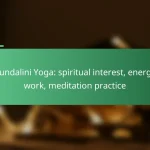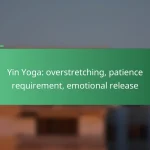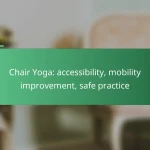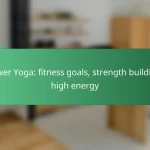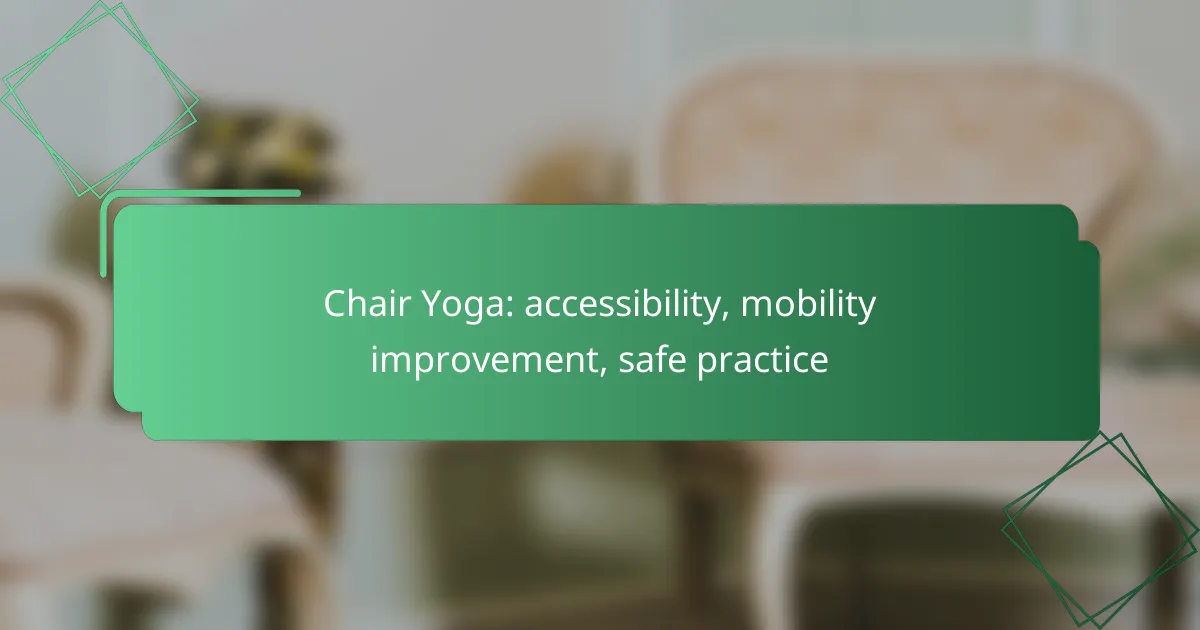Restorative yoga is a gentle practice focused on relaxation and recovery, utilizing soothing poses that calm the nervous system and promote overall well-being. By encouraging deep relaxation, this practice aids in stress reduction and enhances the body’s natural healing processes, making it an ideal choice for those seeking to improve flexibility and mental health. Embrace the tranquility of restorative yoga to support your journey towards recovery and mindfulness.

What are the benefits of restorative yoga?
Restorative yoga offers numerous benefits, primarily focusing on relaxation and recovery. It helps individuals improve flexibility, reduce stress, enhance recovery from physical exertion, promote mindfulness, and support overall mental health.
Improves flexibility
Restorative yoga poses are designed to gently stretch the body, which can significantly improve flexibility over time. By holding poses for extended periods, muscles gradually release tension, allowing for a greater range of motion.
Common poses such as supported forward bends and gentle twists can target various muscle groups. Practicing these poses regularly can lead to noticeable improvements in flexibility, making everyday movements easier and more comfortable.
Reduces stress
One of the primary benefits of restorative yoga is its ability to reduce stress levels. The slow-paced nature of the practice encourages deep breathing and relaxation, which activates the body’s parasympathetic nervous system.
Incorporating restorative poses into your routine can help lower cortisol levels, the hormone associated with stress. Techniques like focusing on breath and using props for support can enhance this calming effect, making it easier to unwind after a long day.
Enhances recovery
Restorative yoga is particularly beneficial for recovery after intense physical activity. The gentle stretches and restorative poses promote blood flow to muscles, aiding in the healing process and reducing soreness.
Practicing restorative yoga post-workout can help alleviate muscle tension and speed up recovery times. It is advisable to include restorative sessions in your weekly routine, especially after strenuous workouts or competitive events.
Promotes mindfulness
Restorative yoga encourages mindfulness by fostering a deep connection between the mind and body. The practice emphasizes being present in the moment, which can enhance overall awareness and mental clarity.
During restorative sessions, practitioners are encouraged to focus on their breath and bodily sensations. This mindfulness practice can lead to improved concentration and a greater sense of peace in daily life.
Supports mental health
Engaging in restorative yoga can have a positive impact on mental health by reducing symptoms of anxiety and depression. The calming nature of the practice helps to create a sense of safety and comfort.
Regular participation in restorative yoga can help individuals develop coping strategies for stress and emotional challenges. It is often recommended as a complementary practice alongside traditional mental health treatments.
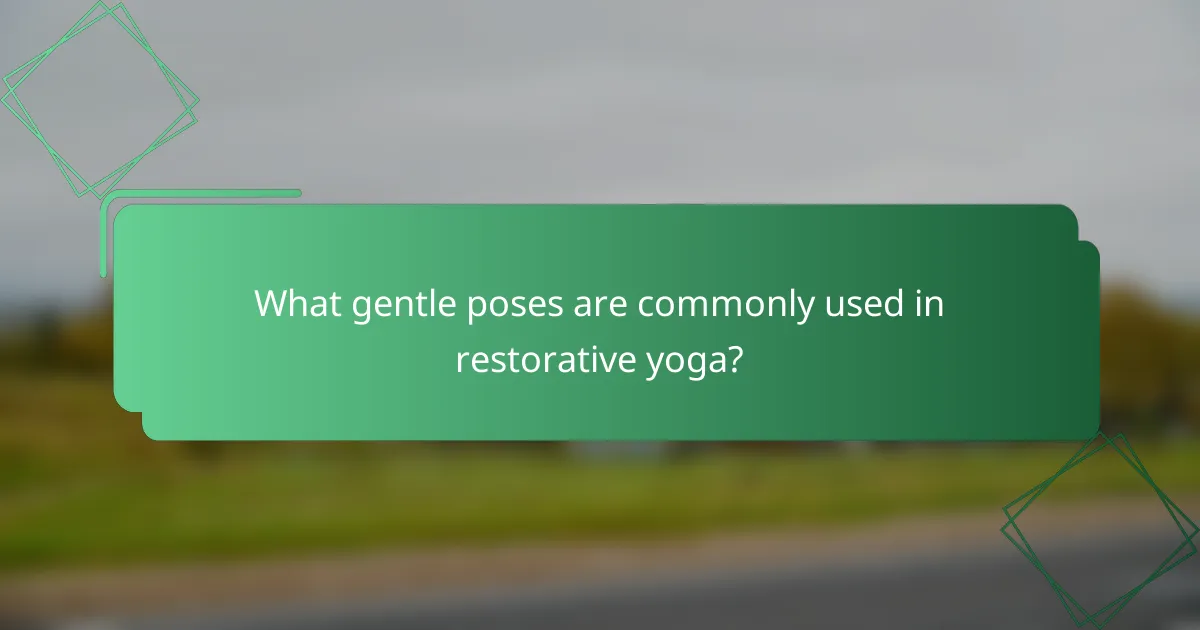
What gentle poses are commonly used in restorative yoga?
Restorative yoga incorporates gentle poses designed to promote relaxation and recovery. These poses help to calm the nervous system, reduce stress, and enhance overall well-being.
Child’s Pose
Child’s Pose is a foundational restorative pose that encourages relaxation and introspection. To perform this pose, kneel on the floor, sit back on your heels, and extend your arms forward while resting your forehead on the mat. This position gently stretches the back and hips, promoting a sense of calm.
When practicing Child’s Pose, focus on your breath, allowing it to deepen as you settle into the pose. Hold for several minutes, using props like blankets or bolsters for added comfort if needed.
Supported Bridge Pose
Supported Bridge Pose involves lying on your back with your knees bent and feet flat on the floor, then lifting your hips while placing a block or bolster under your sacrum. This gentle elevation opens the chest and hips, encouraging relaxation and relieving tension in the lower back.
Maintain a relaxed neck and shoulders, and breathe deeply as you hold this pose. Aim to stay in Supported Bridge Pose for 5 to 10 minutes, allowing your body to fully relax into the support of the prop.
Reclining Bound Angle Pose
Reclining Bound Angle Pose is performed by lying on your back and bringing the soles of your feet together while allowing your knees to fall outward. This pose opens the hips and promotes a gentle stretch in the groin area, fostering relaxation.
To enhance comfort, place cushions or blocks under your knees. Stay in this pose for 5 to 15 minutes, focusing on deep, calming breaths to deepen your sense of tranquility.
Legs-Up-The-Wall Pose
Legs-Up-The-Wall Pose is a restorative posture that involves lying on your back with your legs extended vertically against a wall. This pose helps to improve circulation and reduce fatigue, making it ideal for recovery after a long day.
For added comfort, use a folded blanket under your hips. Hold this pose for 5 to 15 minutes, allowing your body to relax and your mind to quiet as you breathe deeply.
Supported Forward Bend
Supported Forward Bend is achieved by sitting with your legs extended in front of you and gently folding forward, using props like bolsters or cushions to support your upper body. This pose encourages a deep release in the back and hamstrings while calming the mind.
Focus on lengthening your spine as you fold forward, and breathe deeply into the stretch. Hold for 5 to 10 minutes, allowing your body to relax into the support of the props for maximum benefit.

How can restorative yoga aid in recovery?
Restorative yoga aids in recovery by promoting deep relaxation and reducing stress, which can enhance the body’s natural healing processes. This practice involves gentle poses that support the body, allowing for prolonged periods of rest and restoration.
Facilitates muscle relaxation
Restorative yoga encourages muscle relaxation through gentle stretching and supported postures. By holding poses for extended periods, tension in the muscles is released, leading to a state of calm. This relaxation can be particularly beneficial after intense physical activity or during recovery from injury.
To maximize muscle relaxation, use props such as bolsters, blankets, or blocks to support your body. This allows you to focus on your breath and let go of any remaining tension.
Enhances circulation
The gentle movements and prolonged holds in restorative yoga can enhance circulation throughout the body. Improved blood flow helps deliver oxygen and nutrients to tissues, which is essential for recovery and overall health. This can be especially helpful for individuals recovering from surgery or injury.
Incorporating poses like supported bridge or legs-up-the-wall can stimulate circulation in the lower body. Aim to practice these poses regularly to experience their full benefits.
Reduces inflammation
Restorative yoga may help reduce inflammation by promoting relaxation and lowering stress hormones, which can contribute to inflammatory responses in the body. By calming the nervous system, restorative practices can help mitigate chronic inflammation over time.
Consider integrating restorative yoga into your routine, especially if you experience conditions associated with inflammation, such as arthritis or chronic pain. Regular practice can lead to noticeable improvements in overall well-being.
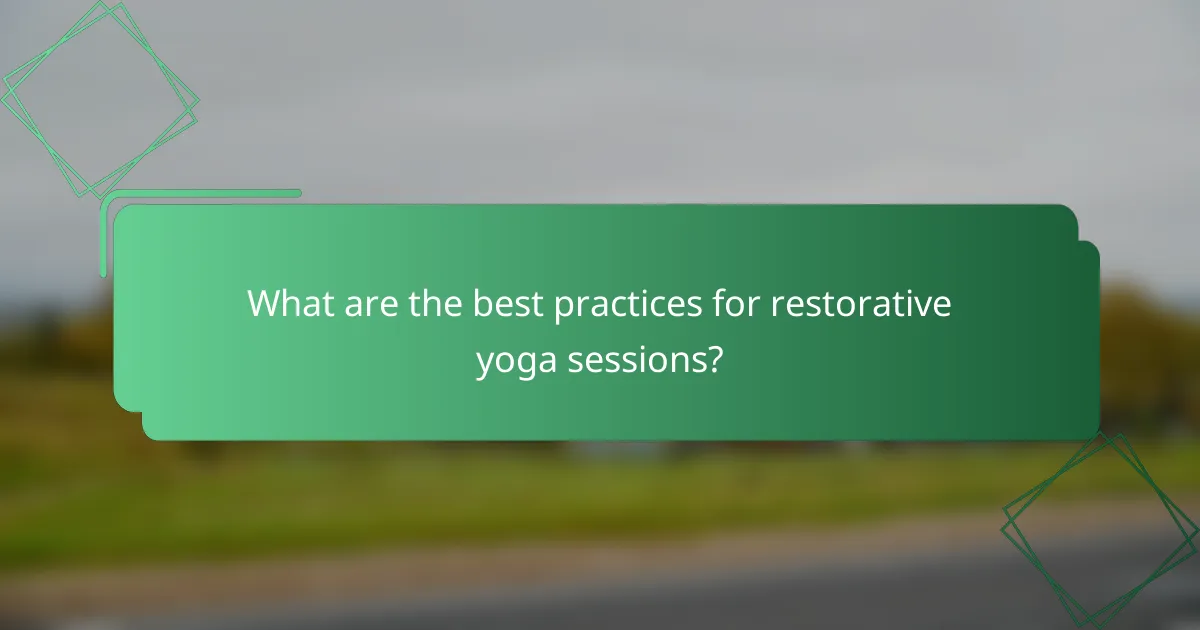
What are the best practices for restorative yoga sessions?
The best practices for restorative yoga sessions focus on creating a supportive environment that enhances relaxation and recovery. Key elements include using props effectively, concentrating on breath control, and maintaining a calm atmosphere throughout the practice.
Use props effectively
Props such as bolsters, blankets, and straps are essential in restorative yoga to support the body and facilitate relaxation. They help to alleviate tension and allow for longer holds in poses without strain. For instance, placing a bolster under the knees in a supine position can relieve lower back pressure.
When selecting props, ensure they are comfortable and easily accessible. Experiment with different setups to find what feels best for your body. Remember, the goal is to create a nurturing space that encourages deep relaxation.
Focus on breath control
Breath control is a fundamental aspect of restorative yoga that enhances relaxation and mindfulness. Practicing deep, slow breathing can help calm the nervous system and promote a sense of peace. Techniques such as diaphragmatic breathing or extended exhalations can be particularly effective.
Incorporate breath awareness into your sessions by synchronizing your breath with movements or holding poses. Aim for a steady rhythm, inhaling for a count of four and exhaling for a count of six. This practice can deepen your experience and enhance the restorative benefits.
Maintain a calm environment
A calm environment is crucial for effective restorative yoga sessions. Choose a quiet space free from distractions, and consider dimming the lights or using soft lighting to create a soothing atmosphere. Playing gentle music or nature sounds can also enhance relaxation.
Additionally, consider the temperature of the room; a slightly warmer environment can help muscles relax more easily. Use essential oils or candles with calming scents like lavender or chamomile to further promote tranquility. Aim to create a sanctuary that invites peace and relaxation.

How does restorative yoga differ from other yoga styles?
Restorative yoga is distinct from other yoga styles primarily due to its emphasis on gentle poses and deep relaxation. Unlike more vigorous practices, restorative yoga focuses on recovery and calming the nervous system, making it suitable for all levels, especially those seeking stress relief or healing.
Less physical intensity
Restorative yoga involves poses that are held for extended periods, typically ranging from five to twenty minutes. This low physical intensity allows practitioners to experience deep relaxation without the strain associated with more dynamic styles like vinyasa or power yoga. The use of props such as blankets, bolsters, and straps supports the body, enhancing comfort and stability.
For those new to yoga or recovering from injury, restorative yoga provides a safe space to explore movement without the pressure of intense physical exertion. It’s an ideal choice for individuals looking to unwind and rejuvenate their bodies.
Focus on relaxation
The primary goal of restorative yoga is to promote relaxation and mental clarity. Each session encourages practitioners to slow down, breathe deeply, and connect with their bodies, fostering a sense of peace and tranquility. This focus on relaxation can significantly reduce stress levels and improve overall well-being.
Incorporating mindfulness techniques, such as guided meditation or breath awareness, enhances the calming effects of restorative yoga. Practitioners often find that even a short session can lead to profound relaxation, making it a valuable tool for managing daily stressors and promoting emotional balance.

